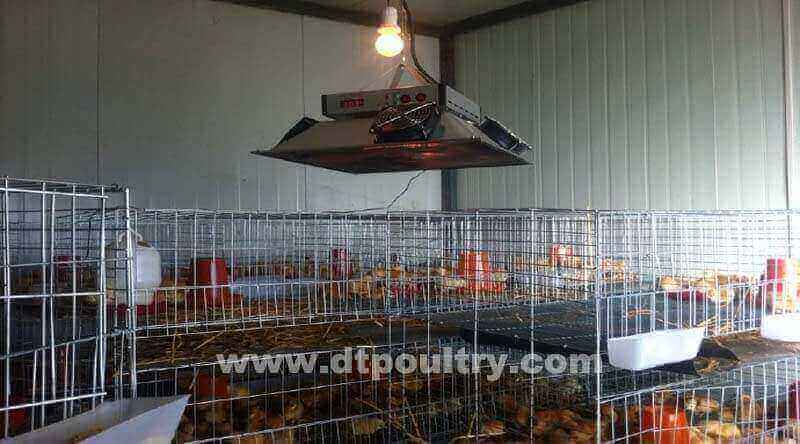Temperature is very important for the regulation of chicks’ body temperature, exercise, feeding, drinking water and feed utilization. Therefore, temperature is the key to the success of brooding, and it must be properly controlled. Let’s take a look at the appropriate temperature for raising chicks and how to raise chicks.
1.Suitable temperature for chick feeding
Normally, during brooding, the appropriate temperature in the brooding room is: 1-2 days old, the temperature is 35 ℃, 3-7 days old, 32-35 ℃; 7-14 days old, 29-32 ℃; 14-21 Day old, the temperature is 27-29 ℃; after 22 days old, the temperature is 21 ℃. Of course, the appropriate brooding temperature varies depending on the brooding method, season, brooder and breed, etc., so the above data is for reference only.
2. Principles for grasping the temperature of chicks
Ambient temperature is the key to raising chicks, especially chicks transported for long distances, the temperature is critical, otherwise cold or dehydration will reduce the survival rate. Therefore, the general principles of temperature: high early, low late; small group high, large group low; weak chicks high, healthy chicks low; cloudy high, sunny low; daytime low evening high; winter high, summer low; broiler chicken high , The breeder is low; in short, grasp the temperature according to the mental state of the chicks, that is, the chicks are not piled up, evenly distributed, lively, and stretch their legs. If the chicks are piled up, chirping, close to the heat source, etc., it means that the temperature is low; if the chicks stay away from the heat source, they desperately drink water, which means that the temperature is high.
When raising chicks, you need to check the following point
(1) Breeding selection Breeding breeds with a breeding and promotion system, and can be introduced nearby.
(2) Chick selection Passive and robust chicks with variety characteristics are selected according to the time of hatching.
(3) Grouping According to the specific situation, different varieties, strong and weak, are grouped regularly.
(4) Open food close Chicks start to eat 24 to 36 hours after hatching. Drink water first, then start drinking, or start drinking and drinking at the same time. In the first ten days, it is best to add 3% to 5% sugar water or 5% glucose and vitamin c in the drinking water to promote the absorption of yolk.
(5) Density off Density is high in winter and low in summer. At the same time, the density is determined according to different chick breeds and feeding methods.
(6) Ventilation clearance Especially for chickens in cages, the feeding density is large, and attention should be paid to the timely discharge of harmful gases and the speed of air convection. Open brooding rooms can open doors and windows at appropriate times for regular ventilation; closed brooding rooms need to use fans and longitudinal ventilation to meet the requirements of fresh air.

